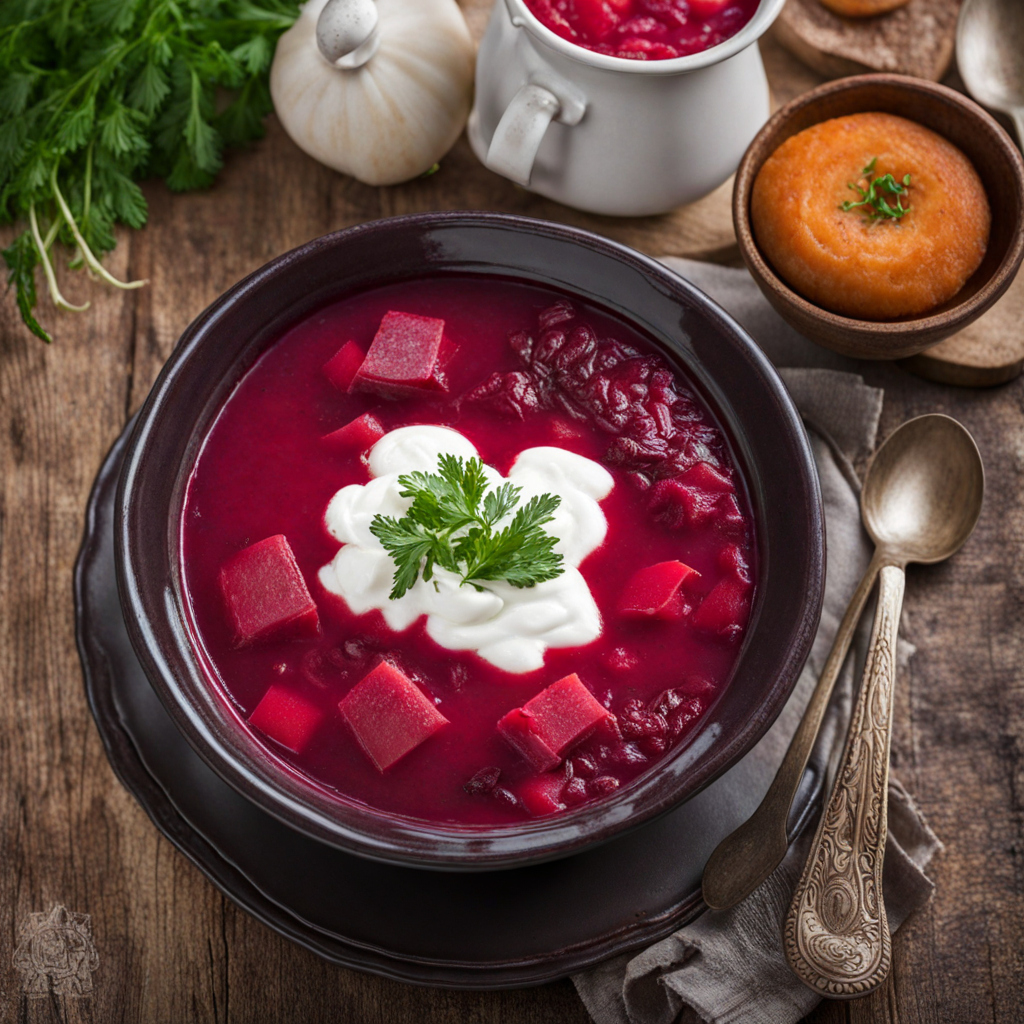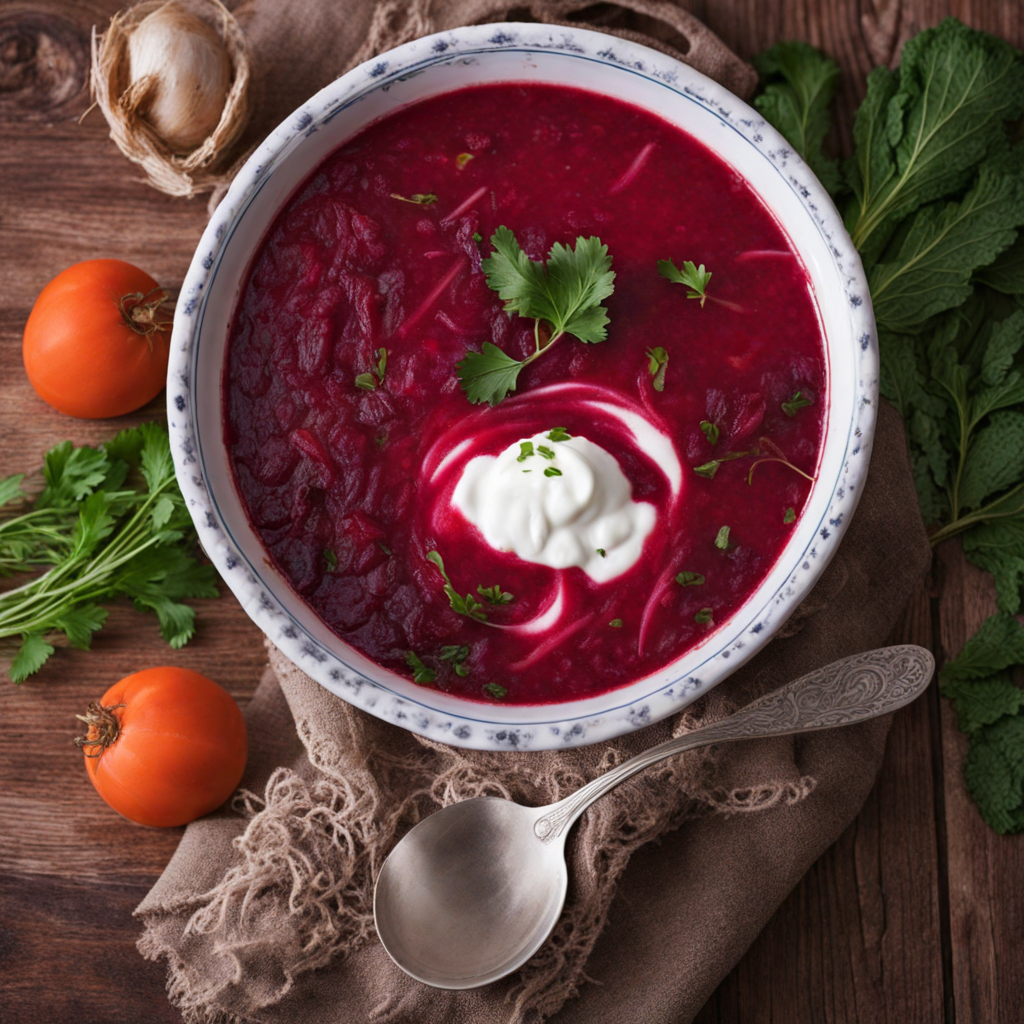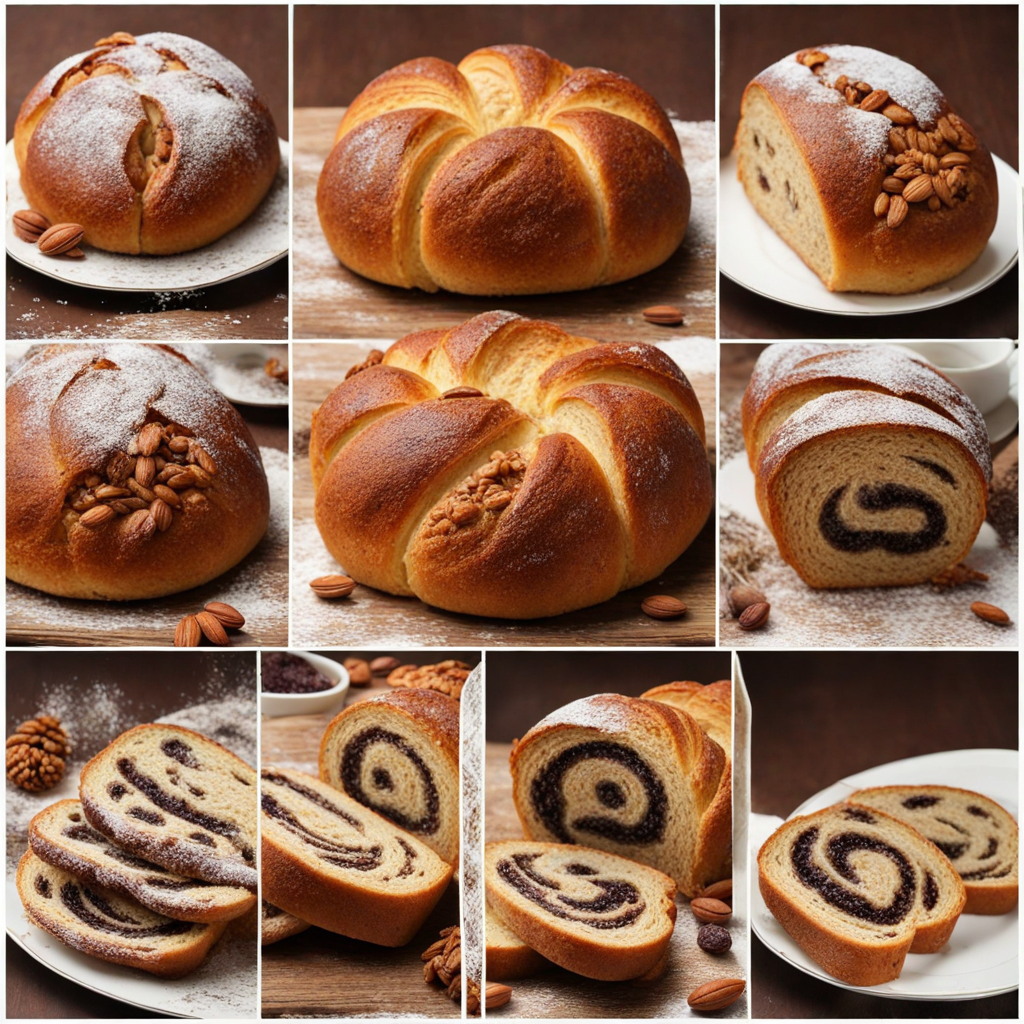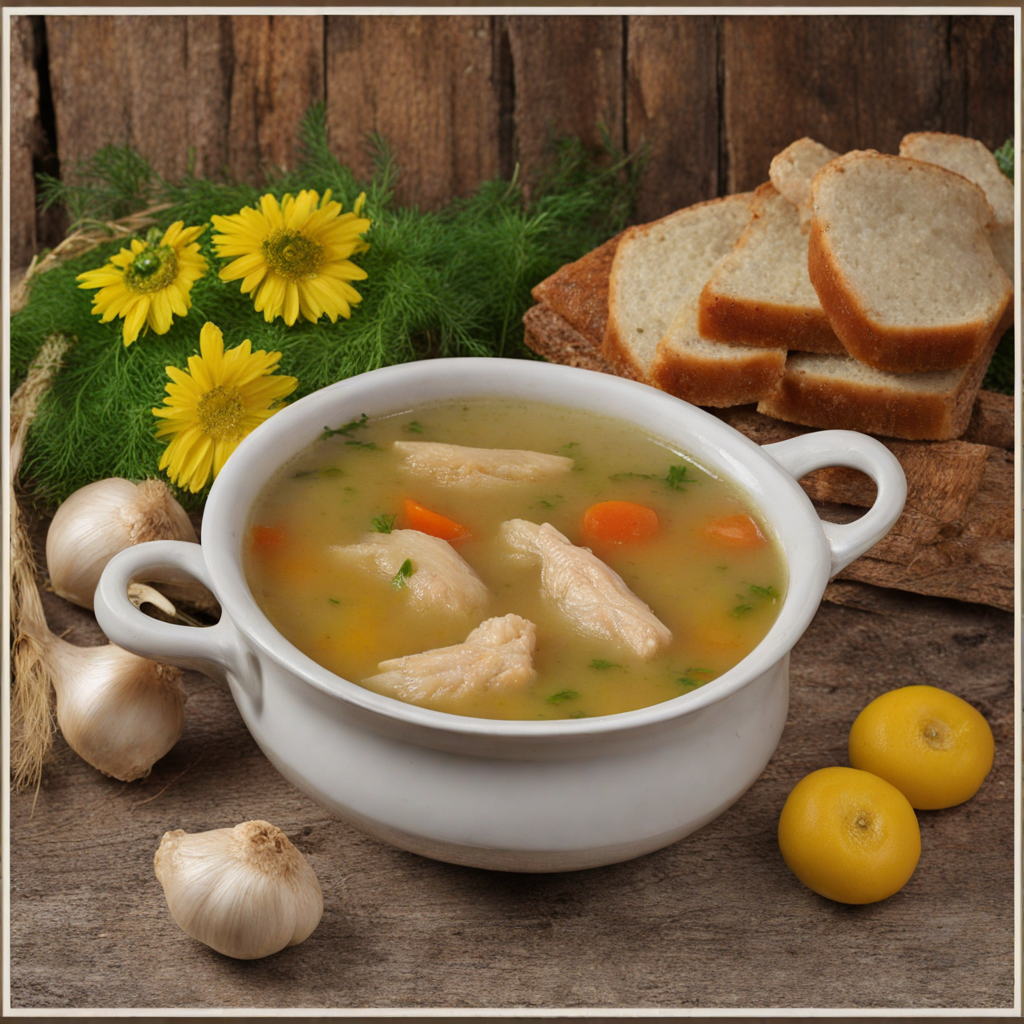Borscht
Borscht is a vibrant and hearty soup that originates from Eastern Europe, with a special place in Moldovan cuisine. Its most distinctive feature is its rich, deep crimson color, which comes from the star ingredient: beets. This root vegetable not only lends its color but also imparts a natural sweetness that balances the dish's savory elements. Traditionally, borscht is made by simmering beets with a variety of vegetables, such as cabbage, carrots, and potatoes, along with aromatic herbs like dill and parsley, which enhance its earthy flavors. In Moldova, borscht can be served in many variations, ranging from vegetarian to meat-based versions that include pork or beef. The addition of fermented ingredients, such as sour cream or kvass, gives the soup a delightful tang that complements the sweetness of the beets. Often garnished with a dollop of sour cream and fresh herbs, each bowl of borscht is a beautiful presentation that invites you to dive in and savor a taste of Moldovan culture. This beloved dish is not just a meal; it’s a warm embrace on a cold day, often enjoyed with crusty bread or cornbread on the side. Borscht is typically served hot, but it can also be enjoyed cold, especially during the summer months, providing a refreshing twist. Whether shared at a family gathering or relished as a comforting solo meal, borscht encapsulates the essence of Moldovan hospitality and tradition, making it a must-try for anyone seeking to explore new culinary horizons.
How It Became This Dish
The Rich Tapestry of Бoрщ: A Culinary Jewel of Moldova #### Origins and Early Influences Borscht, known as "борщ" in Moldovan, is a vibrant and hearty soup that has become a staple of Eastern European cuisine, especially in Moldova, Ukraine, and Russia. Its origins are somewhat nebulous, reflecting the historical migrations and cultural exchanges of the region. While many trace its roots to Ukraine, the soup has deep connections to Moldovan culinary traditions and has evolved uniquely within Moldova's borders. The word "борщ" is believed to have originated from the Slavic word "bortsch," which refers to the wild sorrel plant that was once a common ingredient in early versions of the soup. This herbaceous plant not only provided a sour flavor, but it also reflects the resourcefulness of rural communities who utilized local ingredients. Initially, borscht was prepared as a simple broth, thickened with vegetables and flavored with herbs, serving as a nourishing meal for peasant families. #### Ingredients and Varieties Moldovan borscht is characterized by its rich, earthy flavors, typically made from beets, which give it a striking crimson hue. While beets are the star ingredient, a traditional Moldovan borscht often includes a medley of vegetables such as carrots, potatoes, cabbage, and onions. Additionally, it may incorporate meats like pork or beef, though vegetarian versions are also common, especially among those who adhere to Orthodox fasting periods. The sourness of borscht is a defining feature, traditionally achieved through fermentation or the addition of sour cream and vinegar. In Moldova, it is not uncommon to find the soup flavored with fermented beet juice, which not only enhances its tanginess but also preserves the soup, allowing it to be enjoyed over several days. The use of fresh herbs, such as dill and parsley, adds a fragrant finish to the dish, making each bowl a celebration of seasonal produce. Beyond the classic borscht, there are numerous regional variations throughout Moldova. Some towns may offer a "green borscht," made with sorrel or spinach, while others may add beans or even mushrooms, showcasing the adaptability of this beloved dish. Each family often has its own cherished recipe, passed down through generations, which further reflects the personal and communal significance of the soup. #### Cultural Significance In Moldova, borscht transcends mere sustenance; it embodies a sense of national identity and cultural pride. It is often served during festive occasions, family gatherings, and religious holidays, symbolizing warmth and hospitality. The act of sharing borscht is deeply rooted in Moldovan tradition, where meals serve as a means to bring people together. For many Moldovans, preparing borscht is an art form, showcasing culinary skills and familial bonds. As recipes are shared and modified, they become a canvas for personal expression. The communal aspect of borscht preparation is especially significant during the winter months when families gather to cook together, reinforcing social ties and traditions. Borscht also holds a prominent place in the cultural narrative of Moldova. It is often featured in folk songs, literature, and art, serving as a symbol of the region's agricultural heritage and the resilience of its people. The soup's vibrant color and hearty nature evoke a sense of comfort and nostalgia, making it a beloved dish that evokes memories of home. #### Development Over Time Throughout history, Moldova has experienced numerous invasions, migrations, and political changes that have influenced its culinary landscape. The Ottoman Empire, Austro-Hungarian Empire, and Soviet Union all left their marks on Moldovan cuisine, including the evolution of borscht. During the Ottoman period, for instance, the introduction of spices and new cooking techniques led to a fusion of flavors, which can still be seen in contemporary borscht recipes that incorporate spices like paprika or cumin. The Soviet era further standardized many traditional dishes, including borscht, leading to a more homogenized version of the soup that was served across the Eastern Bloc. However, despite these influences, Moldovan borscht has retained its distinctive character. In recent years, there has been a resurgence of interest in traditional cooking methods, with many chefs and home cooks returning to the roots of their culinary heritage. This movement has seen a revival of artisanal techniques, such as fermentation and slow cooking, allowing borscht to flourish in its most authentic form. The globalization of cuisine has also impacted how borscht is perceived and enjoyed. As Moldovan diaspora communities spread across the globe, they have brought their culinary traditions with them, introducing borscht to new audiences. International food festivals and culinary exchanges have further popularized this dish, allowing it to gain recognition beyond Moldova's borders. #### Modern Innovations In contemporary Moldova, borscht continues to evolve, as chefs experiment with new ingredients and modern cooking techniques. High-end restaurants may present borscht in refined ways, using local organic produce and innovative plating techniques that highlight its visual appeal. Traditional recipes are being reimagined, with some chefs incorporating elements of fusion cuisine, blending borscht with unexpected flavors and presentations. Moreover, borscht has also found its place in the global culinary scene, with food enthusiasts and chefs around the world exploring its unique flavors and cultural significance. This newfound appreciation has led to borscht being featured in gourmet restaurants, cooking shows, and social media platforms, allowing it to gain a new audience while retaining its traditional roots. #### Conclusion The journey of бoрщ from its humble origins to its contemporary status as a culinary icon reflects the rich tapestry of Moldovan culture and history. As a dish that embodies community, resilience, and adaptability, borscht continues to be a source of pride for Moldovans and a symbol of their culinary heritage. Whether served in a rustic home or a modern restaurant, borscht remains a dish that not only nourishes the body but also nourishes the soul, bridging generations and celebrating the enduring spirit of Moldova.
You may like
Discover local flavors from Moldova







